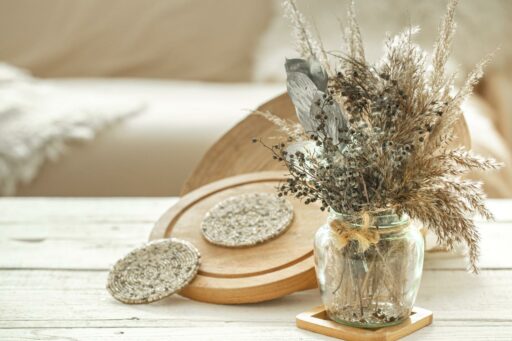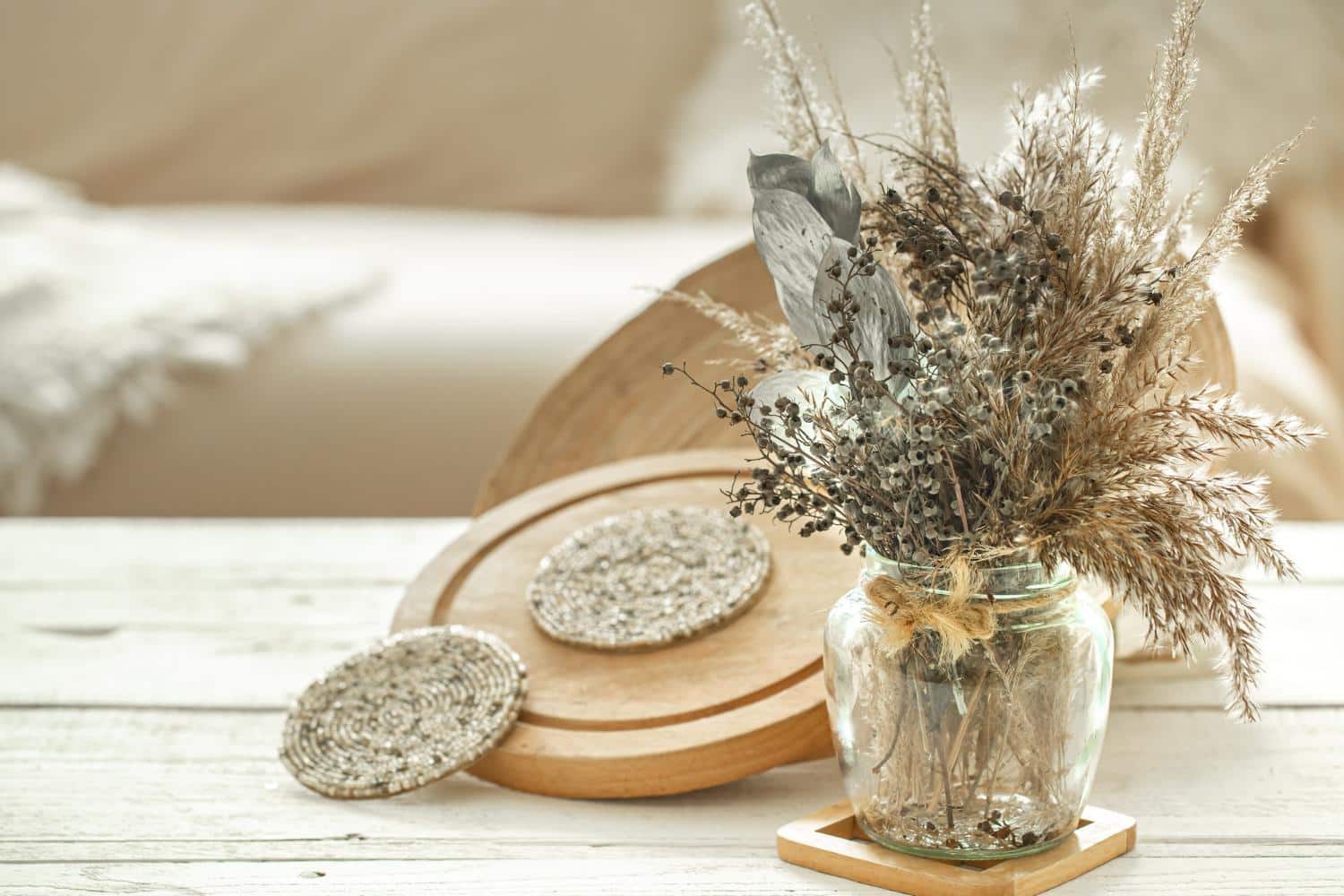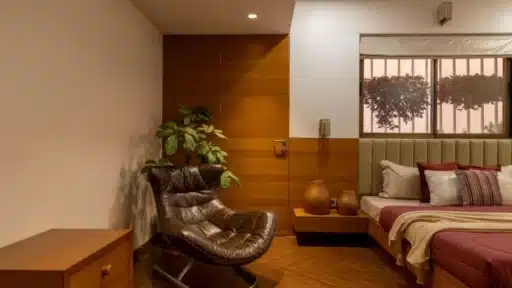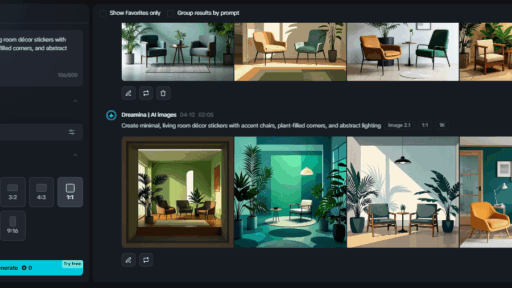A calming atmosphere tends to soothe the mind and make us feel more at ease. Muted colors, soft lighting, or unique accents on the walls—whatever it is, the appearance of a home can affect the way we appear there. Thoughtful decisions in design work to do more than a room look lovely—they create an atmosphere that fosters emotional balance and personal connection.
If you want peace, your surroundings are the best place to begin. Some small tweaks can alter the entire mood of a room. And in that alteration, you might just gain a little more sense and a little more ease in your life.
Choosing Visual Anchors That Invite Stillness
When you need to bring a little more calmness into your surroundings, start with visual items that naturally attract peacefulness. Such items don’t command attention but quietly set the mood. You can find them in many shapes and sizes, from wall decorations to handmade art.
For example, if you’re looking for soothing wall art, Art by Maudsch offer large-scale artworks that trend towards soft textures and muted hues but are also luxurious. If you prefer the feel of things such as pottery or sculptural shapes, you can go through local markets or look at small artists online. The point is to search for items that do not seem random but are actually deliberate.
Soft watercolor reproductions may be another quiet highlight, particularly cool blues or earth tones. Glass sculpture that follows fluid, curvilinear lines can give a sense of motion without distraction. Even a judiciously placed sand garden or framed pressed flower may offer visual weight while creating a soothing presence. Look for objects that feel close-up—things you may look at again with your eyes when you need a moment of peace.
These are five types of visual art and decor that promote a sense of calm and self-connection:
- Minimalist abstract paintings – Soothing color transitions and flowing shapes relax visual tension and promote calm.
- Muted nature prints – Think misty forests, serene oceans, or botanical illustrations that capture natural rhythms.
- Handmade ceramic vases or bowls – The rough textures and forms offer a earthy, tactile quality that is human.
- Unobtrusive fibre art – Weaving earth tones or soft wall hangings of depth without overpowering the space.
- Black and white photography with muted subjects – Solo subjects, empty fields, or stationary elements that bring ideas to mind.
Layering Your Space with Natural Elements and Texture
There is something about natural texture that just anchors a room. Wood, linen, clay, and stone have a quiet presence—they don’t compete for attention, they just are. If used intelligently, in the right layers, these materials create a sense of calm that’s hard to get with man-made materials. A billowy linen curtain that blows in the wind or a river rock dish on a shelf aren’t mere adornments—they’re sensory reminders that keep the rhythm of a busy day slow.
You don’t need a full redesign to add this sense. Start with subtle accents that are warm and textural but not overwhelming. Employ pieces that possess an element of being slightly imperfect or hand-made—these are more personal and emotionally engaging. As designer Ilse Crawford has noted, “Design is not just about products. It’s about spaces that make people feel good.” These subtle touches tend to have the strongest emotional impact.
Here are a couple of nature elements that share that sense of calmness:
- Linen textiles – Think pillowcases, table runners, or sheer drapes that let in pale light while bringing in subtle movement.
- Hand-thrown ceramics – A clay vase or coffee mug with an organic edge can instantly relax a shelf or tabletop.
- Raw wood finishes – As a side table, picture frame, or serving platter, the texture and grain create an honest, earthy look.
- Natural fiber baskets – Rattan, jute, or seagrass baskets add utility and warmth and minimize visual clutter.
Embracing Creative Expression as a Form of Connection
There is something so personal about decorating your bedroom with something you made. It’s not how well it looks—it’s whether you like to do it. Whether it’s a painting on canvas, a collage of photo pictures of memories, or merely a sketch stuck up in a frame, these are more than they appear. They freeze time, emotion, and pieces of your past. When you create your own paint by number art, it’s less about completing shapes and more about clearing space to think, to breathe, and just be. Options like Number Artist make it easy to turn this peaceful activity into a unique expression of yourself. When you create a pressed flower collage out of the flowers you picked on your stroll, you’re giving your walls a whispered history—something something mass-produced simply can’t do.
Artwork does not have to be perfect or overdone. It just has to be truthful. Small projects such as painting on canvas, building a wall art piece, or assembling found material in a shadow box can end up being in your home to stay.
Some of the ways that this kind of do-it-yourself art helps with the deeper connection are:
- It slows you down – Hand work gets you out of autopilot and into the moment.
- It gives you confidence – Finishing a project—large or small—reminds you of your creative abilities.
- It makes your space more personal – Your home starts to reflect your inner life, not trends.
- It holds emotional memory – Handmade things often retain the mood, thought, or feeling you were in when you made them.
Curating Corners That Reflect Who You Are

A good home is never about the master plan—it’s always the quiet corners that ring the loudest. Those are the areas where your personality comes out, whether that’s a reading nook, a cluttered workspace filled with tchotchkes, or a calm shelf by the window. It could be a photo that makes you think of a great memory, a candle that you always light when you need to focus, or artwork that reminds you of the earth every time you look at it.
The secret is to build small areas that offer comfort and thought, or simply a break from the noise. You don’t need much room—just room for a few objects that matter. Let the objects in these niches be personal, even if they’re not necessarily pretty. They will form small visual pools of peace about your house.
Some tips for making meaningful corners:
- Add framed photographs or postcards – Hang images that remind you of people, places, or memories that matter.
- Add favorite books or journals – Let the space speak to your thoughts and interests.
- Use things from your travels – Rocks, shells, textiles—whatever speaks for itself.
- Add a candle or diffuser – Smell can instantly make a space feel more inviting and calming.
- Layer in hand-made or given things – These hold significance and a gentle form of beauty.
Conclusion
Creating a peaceful home isn’t about having the ideal plan—it’s about living with pieces that feel real, calming, and yours. Whether it’s artwork you’ve collected, parts you’ve built yourself, or small nooks that are just filled with stuff that matters, these choices affect how you feel on a daily basis. A serene space is a friend to a serene mind. And when your home is a reflection of who you are, it is no longer a place to be but a dwelling to return to yourself.








